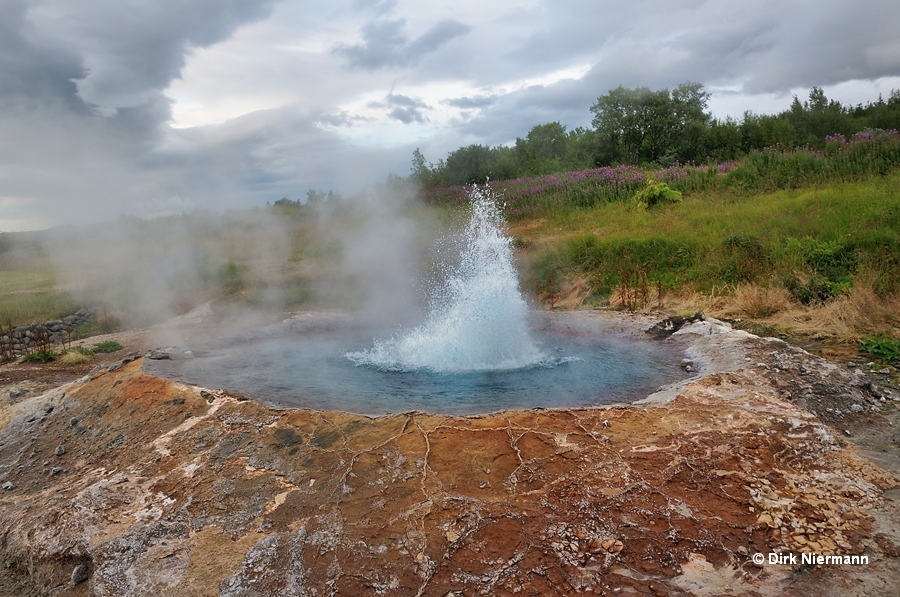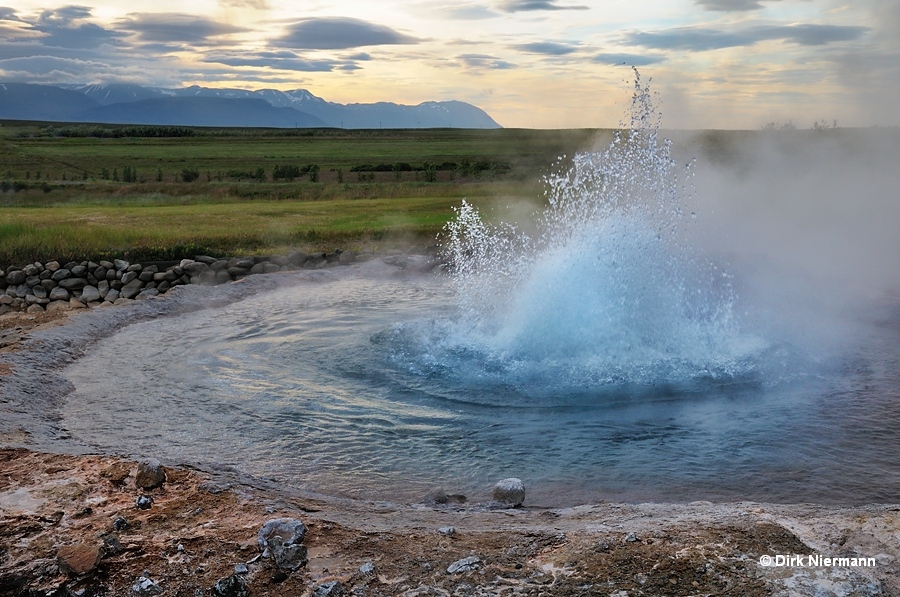Hveravellir / Húsavík
Following the cross-country road 87 from lake Mývatn in direction Húsavík you reach the low-temperature geothermal area Hveravellir after approximately 32 km (19 miles). The old farm site developed to a center of greenhouse industry, and pyramidal cistern roofs as well as steam plumes are already visible from a distance. Hveravellir is home of the geysers Ystihver (northernmost hot spring), Uxahver (ox hot spring), and Syðstihver (southernmost hot spring). In the 19th century Uxahver was the most important geyser in North-Iceland. From a huge 2.5 x 3.5 m sinter cone it erupted up to 9 m (30 feet) high. Unfortunately, it has been covered by a concrete cistern roof in 1970. The same happened to Syðstihver, a smaller geyser with eruptions up to 3 m (10 feet), and Strútshver (conic hot spring), a large hot spring in the Helga river. Among the major geothermal features today only Þvottahver (laundry hot spring), an intermittent hot spring north of Hveravellir on the bank of Helga river, and the fountain-type geyser Ystihver are not covered by cisterns.

Ystihver, also called Yztihver, Baðstofuhver (bathroom hot spring), or Norðurhver (northern hot spring), is located at the northern periphery of Hveravellir and can even be spotted from road 87. It consits of a large sinter bowl of approximately 10 m (32 feet) in diameter and 8 m (26 feet) in depth, filled with blue water near boiling temperature. The recorded history of Ystihver shows three different stages. In its unmanipulated state during the 18th and 19th century eruptions had been very rare and less impressive. Similar to Óþerrishola at Haukadalur an influence of hydrostatic pressure was assumed. In 1904 the water level was lowered by 25 cm (9 in) by carving discharge channels into the geyser mound. Ystihver responded with eruptions every few minutes, some of them up to 12 m (40 feet) high. Even bursts reaching 25 m (80 feet) have been reported for later years. After utilisation of the water in 1970 the water level of Ystihver has been raised again with the result that major eruptions do no longer take place, except triggered by soap. In contrast, minor eruptions up to 3 m (10 feet) high, as shown in the pictures, are frequent. Smaller splashes occur every few minutes.

A few feet south of Ystihver a concrete cistern covers the smaller 2 x 3 m sinter cone of the permanently boiling hot spring Strokkur (the churn).